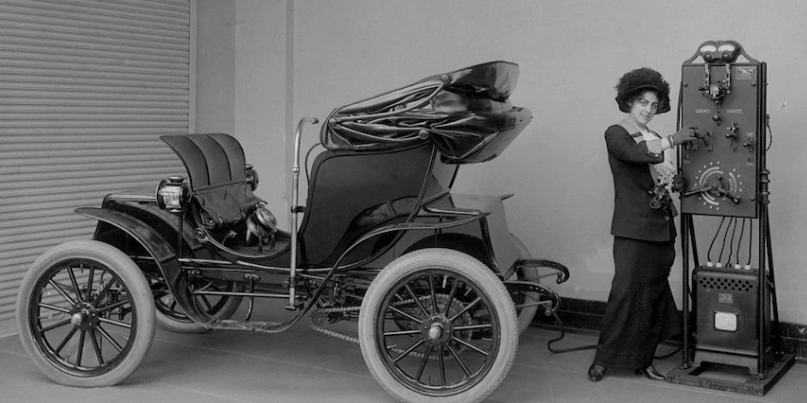EV’s here, EV’s there, seemingly EV’s are everywhere… except on the actual roads, for now.
Based upon the headlines, commercials, recent IPO’s, and tweets from a certain celebrity CEO, you would think EV’s are as common on the road as an IC (internal combustion) powered F-150. To anyone outside of the industry, it comes as a big surprise to hear that EV’s only make up about 3% of the market share. A number that is expected to grow exponentially over the coming years, but we are not quite there yet.
If you were part of the 112.3 million viewers of ‘the big game’ in February, then you were a part of the population that was inundated with EV commercial after EV commercial. Certainly, a sign of where the market is headed. The question then becomes, how quickly do we get there?
Most people think Elon Musk kicked off the electrification craze when the Tesla unveiled a dynamic, all-electric roadster in in 2006 (officially released as a 2008 model). Actually, the first electric vehicles were produced well over 100-years before the Tesla Roadster turned motoring enthusiasts onto electrification. Here in the United States the first electric vehicle is credited to William Morrison, a chemist who lived in Des Moines, IA. In 1890 he created a six-passenger electric vehicle that was capable of a top speed of 14 miles per hour.
Over the next decade the industry saw several manufactures produce their versions of electric vehicles, reaching a pinnacle around 1900 when New York City had a fleet of 60 electric taxis and charging stations every few blocks to meet the rising demand.
As electric vehicle sales were climbing due to the easy, clean, and quiet operation, a true disruptor burst onto the scene, Henry Ford, and the Model T! The Model T car cost only $650 ($18,500 in today’s dollars) while the electric roadster of the day cost $1,750 ($50,000 in today’s dollars). The explosion (pun intended) caused by the internal combustion engine, the popularity of the Model T, and the access to cheap gasoline, led to a sudden and swift decline in electric vehicles.
Throughout the decades, there were a variety of inventors, tinkerers, and manufactures who dabbled in electric vehicles, but the demand for expensive, limited range and often odd-looking vehicles just didn’t justify production at any level of scale.
Although Elon Musk and Tesla get most of the headlines for the current hysteria around EV’s, credit should also be paid to Toyota who paved the way with the daring release of the Prius. In 2000, Toyota released to much fanfare and success, the hybrid-electric Toyota Prius. Although, Honda released the Insight first, it did not receive near the acclaim the Prius did.
Fast forward to today, when almost every CEO is racing to update their talking points to claim they will be first to convert their fleet to fully electric. The bold declarations have ranged from 10-years to 3-years, all of which are purely speculative talking points at this time.
There are many unanswered questions about the reality of a fully electrified fleet roaming the highways and byways of this great nation and the rest of the world. A few certainties we can count on, the cost for an EV will continue to come down as more manufactures fight for market share and ranges will continue to be extended as technology improves and battery costs lower.
One big unknown is the capacity of the power grid and how it can handle a sudden surge (another intended pun). Most Americans have experienced some type of power outage in their lifetime, and many experience power-outages annually during storm season. What happens to your EV when you cannot access power due to inclement weather? Another unknown is how to handle a vehicle running out of charge on a remote section of turnpike. There are many bells and whistles to alert the driver they need a charge. Ironically, my gas light goes off like its DEFCON 1 if I don’t pull over immediately. In spite of that, I have run out of gas and have been stuck on the side of an interstate. Who hasn’t played a game of mileage chicken with their gas light? The good thing is gasoline can easily be delivered in a little red can by most anyone. How many rest stops in middle-America have portable charging packs on hand to loan out or sell?
Lastly, what is the long-term impact all these battery packs are going to have on our environment? Almost every component of an IC vehicle can be salvaged and recycled at a reasonable rate. You can head to most auto-recycling centers and grab a ‘new to you’ engine, etc. Do Pull N Pick Auto Parts Centers sound familiar to anyone? In the future will we be able to wander through row after row of Tesla Model S, Chevrolet Bolts, and Ford Lightings to grab a ‘new to you’ inverter, low voltage DC-DC converter, etc.?
There is no question where we are headed, and after a bit of review, it is back to a place we have already been. A city filled with electric vehicles, charging stations readily accessible to everyone needing a bit of juice, and the sound of, or lack thereof, mid-day traffic. That is of course until, the next trip Back to the Future…
- Ryan Nelson has more than 25 years of experience in the retail industry and is a partner at Advanced Dealer Solutions, a leading independent agency specializing in dealership development in the auto, RV and powersports industries.











